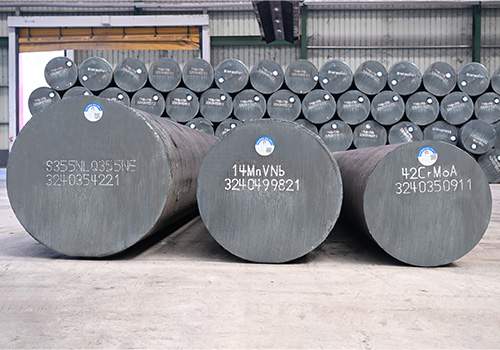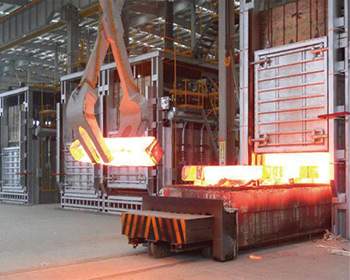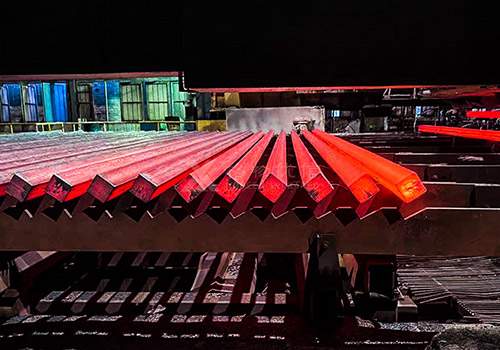
Key Benefits of Steel Billets in the Automotive Industry
Table of Contents
Introduction

The automotive industry relies heavily on a variety of materials for the manufacturing of components that are essential for vehicle production. Among these materials, steel billets play a crucial role due to their versatility, strength, and ability to be formed into precise shapes required for automotive parts. Steel billets are semi-finished products that are used in the creation of a wide range of automotive components, including engine blocks, suspension parts, and structural components.
In this blog, we will delve into the significance of steel billets in the automotive industry, their benefits, and the reasons why they continue to be a preferred choice for manufacturers worldwide. Whether you’re an automotive engineer, manufacturer, or simply someone interested in the manufacturing process, this guide will provide valuable insights into how steel billets contribute to the quality and efficiency of modern automotive production.
What Are Steel Billets?
Steel billets are solid pieces of metal that are produced by heating and shaping steel into a cylindrical or rectangular form. These billets are produced through a process known as casting, where molten steel is poured into molds to solidify and form these semi-finished products. Steel billets have a variety of uses, especially in industries such as automotive, construction, and machinery manufacturing.
Once produced, steel billets can be further processed into other forms like bars, rods, sheets, or structural components, depending on the needs of the manufacturer. Their malleability allows them to be shaped and sized to fit specific requirements for different automotive parts.
Key Benefits of Steel Billets in the Automotive Industry


Durability and Strength
Steel billets are known for their high tensile strength and durability. When these billets are used in the automotive industry, they provide the structural integrity necessary for components that must withstand significant stress and wear. From the chassis to engine parts, steel billets ensure that vehicles are robust and long-lasting.
Cost-Effectiveness
Although steel billets require an initial investment in production, they are highly cost-effective in the long run due to their ability to be used in the manufacturing of multiple types of parts. The low-cost nature of steel billets also helps automotive manufacturers keep production costs within budget while maintaining the quality of the final product.
Versatility in Production
Steel billets can be molded and shaped into various forms, making them ideal for the production of a wide range of automotive components. From small, intricate parts to larger, heavy-duty components, steel billets offer unmatched versatility in meeting the design requirements of different vehicle models.
High Recyclability
Another significant advantage of steel billets in the automotive industry is their recyclability. Steel is one of the most recycled materials globally, which contributes to the sustainability of automotive production. By using steel billets that are derived from recycled materials, automotive manufacturers can reduce their environmental impact while maintaining the quality and strength of their products.
Improved Performance and Safety
Automobile manufacturers prioritize safety, and steel billets play a key role in ensuring that vehicles perform at their best. Steel components are critical in providing crash protection, structural integrity, and overall vehicle stability. Steel billets are often used in the construction of frames and impact-resistant parts, making them indispensable in producing vehicles that meet safety standards.
Applications of Steel Billets in Automotive Manufacturing
Steel billets are essential in the creation of a variety of automotive parts. Below are some of the key applications of steel billets in the automotive sector:
Engine Components
Steel billets are used to create engine blocks, crankshafts, camshafts, and connecting rods. These components must withstand high temperatures and significant mechanical stress, making steel billets the ideal material for ensuring long-lasting performance and durability.
Suspension Parts
Steel billets are commonly used in the manufacturing of suspension systems, including control arms, shock absorbers, and steering knuckles. These parts must endure heavy loads and constant movement, which is why steel billets are preferred for their strength and reliability.
Body and Chassis
Steel billets are also essential in the production of the vehicle’s body and chassis components. Parts like door frames, roof structures, and vehicle beams rely on steel billets for their structural integrity and ability to resist deformation in the event of an accident.
Transmission Components
Transmission components such as gears, shafts, and housings are often made from steel billets. These parts require a high level of precision and must be able to withstand continuous use under varying loads, making steel billets the material of choice for their manufacture.
Table: Common Automotive Parts Made from Steel Billets
| Automotive Part | Function | Benefits of Using Steel Billets |
|---|---|---|
| Engine Blocks | Houses engine components, maintains pressure | Durability, heat resistance |
| Crankshafts | Converts linear motion into rotational motion | Strength, wear resistance |
| Suspension Arms | Connects suspension to the vehicle frame | High stress tolerance, long-lasting |
| Steering Knuckles | Provides a pivot point for the steering system | High load-bearing capacity |
| Gears and Shafts | Transfers torque between engine and wheels | Precision, strength, and durability |
How to Choose the Right Steel Billets for Automotive Manufacturing

Assessing the Material Quality
When selecting steel billets for automotive production, it is crucial to consider the quality of the material. Steel billets used in the automotive industry must meet certain standards to ensure that the components manufactured from them are durable, reliable, and safe for consumers.
Consider the Billet Size and Shape
The size and shape of the steel billets used will depend on the specific components that need to be produced. Larger billets are typically used for manufacturing larger parts such as chassis, while smaller billets are used for intricate components like gears and engine parts.
Evaluate the Steel Composition
The composition of the steel billets is essential in determining their performance characteristics. Depending on the application, steel billets may need to be alloyed with other materials to enhance specific properties such as heat resistance, strength, or corrosion resistance.
Supplier Reliability
Choosing a reputable supplier of steel billets is critical for ensuring that the billets are of high quality and meet industry standards. Automotive manufacturers should work with trusted suppliers that can provide consistent quality and timely delivery of steel billets.
Conclusion
Steel billets are indispensable in the automotive industry, offering strength, versatility, and cost-effectiveness for the production of critical vehicle components. Their ability to be molded into various shapes and sizes allows them to meet the diverse needs of automotive manufacturers, from engine parts to chassis components. By choosing the right steel billets, manufacturers can improve the safety, performance, and durability of their vehicles while also reducing costs and environmental impact.
Steel billets will continue to be a cornerstone of automotive manufacturing as the industry progresses toward more sustainable and advanced production methods. At [Your Company Name], we offer high-quality steel billets designed to meet the rigorous demands of the automotive industry. Contact us today to learn more about how our steel billets can enhance your manufacturing processes.
FAQ
What are steel billets used for in the automotive industry?
Steel billets are used in the production of various automotive components, including engine blocks, suspension parts, transmission components, and chassis. They provide strength, durability, and precision for critical vehicle parts.
How are steel billets made?
Steel billets are made by heating steel to a molten state and casting it into cylindrical or rectangular shapes. These billets are then further processed into parts that are used in manufacturing.
Why are steel billets preferred in the automotive industry?
Steel billets are preferred because of their high tensile strength, durability, and versatility. They can be shaped into various forms and are ideal for creating components that require precision and reliability.
Can steel billets be recycled?
Yes, steel billets can be recycled, which is a key benefit for the automotive industry. The recycling process helps reduce costs and environmental impact while maintaining the quality of the material.
Are steel billets cost-effective for automotive manufacturers?
While the initial cost of steel billets may be higher compared to other materials, their long-term benefits, such as durability, strength, and recyclability, make them a cost-effective choice for automotive manufacturers.






